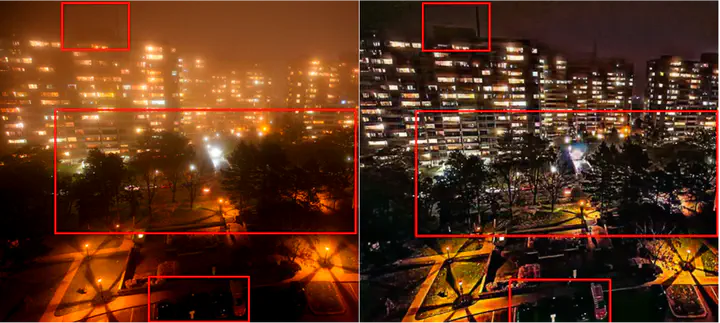Enhancing Visibility in Nighttime Haze Images Using Guided APSF and Gradient Adaptive Convolution

Abstract
Visibility in hazy nighttime scenes is frequently reduced by multiple factors, including low light, intense glow, light scattering, and the presence of multicolored light sources. Existing nighttime dehazing methods often struggle with handling glow or low-light conditions, resulting in either excessively dark visuals or unsuppressed glow outputs. In this paper, we enhance the visibility from a single night- time haze image by suppressing glow and enhancing low-light regions. To handle glow effects, our framework learns from the rendered glow pairs. Specifically, a light source aware network is proposed to detect light sources of night images, followed by the APSF (Angular Point Spread Function)-guided glow rendering. Our framework is then trained on the rendered images, resulting in glow suppression. Moreover, we utilize gradient-adaptive convolution, to capture edges and textures in hazy scenes. By leveraging extracted edges and textures, we enhance the contrast of the scene without losing important structural details. To boost low-light intensity, our network learns an attention map, then adjusted by gamma correction. This attention has high values on low-light regions and low values on haze and glow regions. Extensive evaluation on real nighttime haze images, demonstrates the effectiveness of our method. Our experiments demonstrate that our method achieves a PSNR of 30.38dB, outperforming state-of-the-art methods by 13% on GTA5 nighttime haze dataset. Our data and code is available at GitHub.